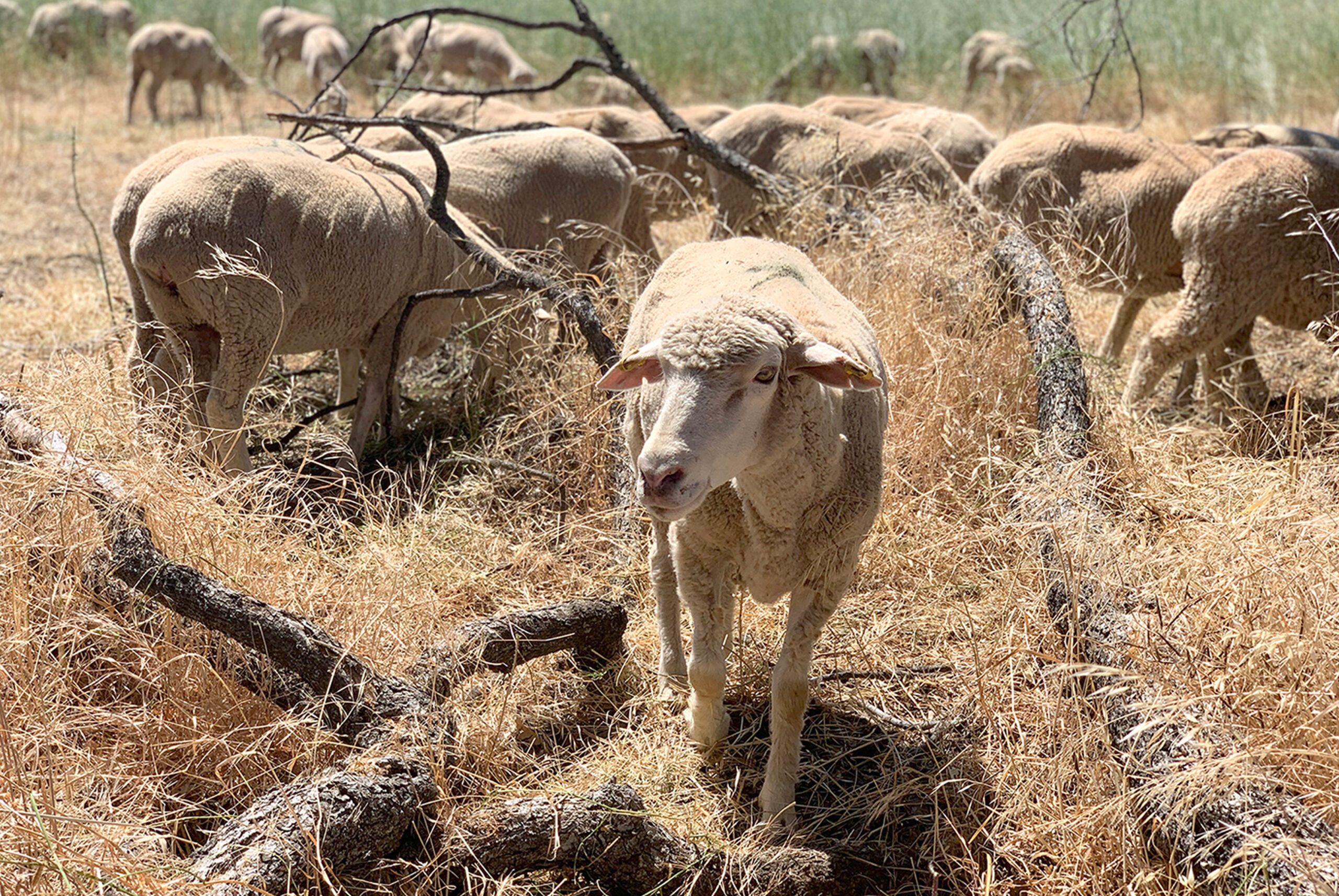Since 2017, The Land Trust has been removing the heavy buildup of weed thatch from non-native annual plant dry matter on the Wantrup Preserve. The project has both fuels reduction and habitat restoration objectives and this year, the dry season grazing has just begun again.
Goats and sheep are used to remove the thatch, which not only helps to remove fine fuels that can quickly carry a wildfire, but also provides the opportunity for native plants to germinate in the seed bank within the soil and grow.
The Land Trust Stewardship team have been assessing the project’s impacts by monitoring grazed and un-grazed vegetation plots. Across the 230-acre area, paired grazed and ungrazed plots have been established. Detailed botanical monitoring has consistently shown substantially higher native species richness and abundance in grazed areas. In the ungrazed plots, invasive species dominate and are producing substantial fuel loads. Besides the measurable results in protecting native species, the project has also proven to be effective against wildfire. In 2020, the LNU Lightning Complex fire burned from a neighboring property right up to the area that had been grazed and then stopped because of a lack of fuel.
The Land Trust continues to work toward developing effective models for reducing wildfire risk and restoring native habitats. We look forward to continuing to share our project findings with other conservation organizations, agencies and landowners in hope that it will help to inform the ongoing management of California’s biologically rich open spaces.

